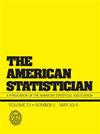一个说明随机试验估计和估计的例子
IF 2.1
4区 数学
Q1 STATISTICS & PROBABILITY
引用次数: 0
摘要
最近,国际协调会议最终确定了随机试验的评估框架,该框架已被世界各地的监管机构采用。该框架引入了五种处理随机化后事件的策略;即处理政策,复合变量,同时对处理、假设和主要阶层进行估计。我们描述了一个说明性的例子来阐明这五种处理并发事件的策略之间的区别,并为每种策略提供了一种评估技术。具体来说,我们考虑了治疗中断的并发事件,并引入了潜在结果符号来描述五种估计和相应的估计量:(1)治疗政策总效果的治疗意图估计量;(2)结果和继续治疗的组合的治疗意向估计器;(3)观察到继续接受治疗的个体的每个方案结果估计;(4)所有个体继续接受治疗的假设情景的g计算估计量;(5)在实验条件下继续接受治疗的个体的治疗效果的主要层估计。通过定义某些估计相等的情况,以及通过研究重复结果测量下的治疗策略,可以提供额外的见解。我们强调相关的因果推理文献,以便在实践中采用。本文章由计算机程序翻译,如有差异,请以英文原文为准。
An Example to Illustrate Randomized Trial Estimands and Estimators
Recently, the International Conference on Harmonisation finalized an estimand framework for randomized trials that was adopted by regulatory bodies worldwide. The framework introduced five strategies for handling post-randomization events; namely the treatment policy, composite variable, while on treatment, hypothetical and principal stratum estimands. We describe an illustrative example to elucidate the difference between these five strategies for handling intercurrent events and provide an estimation technique for each. Specifically, we consider the intercurrent event of treatment discontinuation and introduce potential outcome notation to describe five estimands and corresponding estimators: (1) an intention-to-treat estimator of the total effect of a treatment policy; (2) an intention-to-treat estimator of a composite of the outcome and remaining on treatment; (3) a per-protocol estimator of the outcome in individuals observed to remain on treatment; (4) a g-computation estimator of a hypothetical scenario that all individuals remain on treatment; and (5) a principal stratum estimator of the treatment effect in individuals who would remain on treatment under the experimental condition. Additional insight is provided by defining situations where certain estimands are equal, and by studying the while on treatment strategy under repeated outcome measures. We highlight relevant causal inference literature to enable adoption in practice.
求助全文
通过发布文献求助,成功后即可免费获取论文全文。
去求助
来源期刊

American Statistician
数学-统计学与概率论
CiteScore
3.50
自引率
5.60%
发文量
64
审稿时长
>12 weeks
期刊介绍:
Are you looking for general-interest articles about current national and international statistical problems and programs; interesting and fun articles of a general nature about statistics and its applications; or the teaching of statistics? Then you are looking for The American Statistician (TAS), published quarterly by the American Statistical Association. TAS contains timely articles organized into the following sections: Statistical Practice, General, Teacher''s Corner, History Corner, Interdisciplinary, Statistical Computing and Graphics, Reviews of Books and Teaching Materials, and Letters to the Editor.
 求助内容:
求助内容: 应助结果提醒方式:
应助结果提醒方式:


